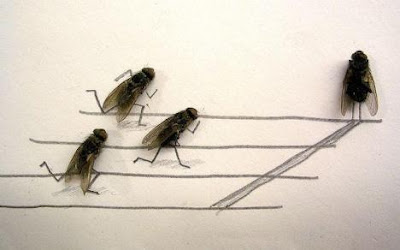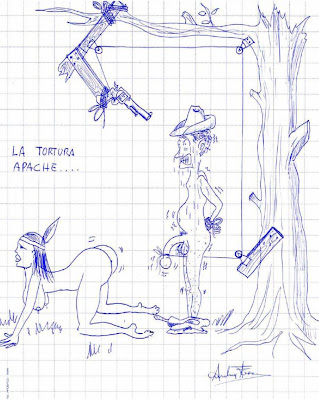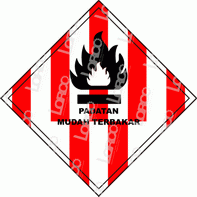Allegory is the intentional conveying, by means of symbol and image, of a further, deeper meaning than the surface one. Allegory may thus be said to be extended metaphor, worked out in many relationship. It is of greater length and complexity than parable or fable and is imaginative where analogy is rational (Benton, 1968: 641).
In Diksi Dan Gaya Bahasa, Gorys Keraf said: Alegori adalah suatu cerita singkat yang mengandung kiasan. Makna kiasan ini harus ditarik dari bawah permukaan ceritanya (2006: 140). It means the allegorical story that has a deeper meaning in addition to surface meaning.
In other ways, Rachmat Joko Pradopo said: allegori ialah kiasan ataupun lukisan kiasan. Cerita kiasan atau lukisan kiasan ini mengiaskan hal lain atau kejadian lain (2005: 71). The allegorical elements are not presenting an everyday experience or meant to be realistic in time and or space, but there is something magical like a dream like about the highly symbolic scene and action about to take place. Character within the story also contain allegory, in which personify abstract concepts or types, an the action of the narrative usually stands for something not explicitly stated.
Allegory is composed by symbols, personifications, and metaphors, which are the representation of an idea or a concept that can have a different meaning throughout a literary work (Caldwell, 2007).
Symbol is a word or image that signifies something other that is literally represented. In symbols, the objective or act is too understood on two levels; the literal and the figurative. For example, the cross is a symbol of Christianity, the donkey and the elephant are symbols of two American political organization.
Personification is the giving of human characteristic to inanimate objects, ideas, or animals. It is really a subtype of metaphor, an implied comparison in which the figurative term of comparison is always a human being. When a poet makes a mirror to speak and think, he is personifying an object. When Keats in one of his poems describes autumn as harvester “sitting careless on a granary floor”, he is personifying a concert.
Metaphor is an implied comparison between two usually unrelated things indicating a likeness or analogy between attributes found in both things. For example “the entire world’s a stage”. It means the world like a stage of drama. Human plays the God’s rule.
Allegory is work of written, oral, or visual expression that uses symbolic figures, objects, and actions to convey truths or generalizations about human conduct or experience. It encompasses such forms as the fable and parable. Characters often personify abstract concepts or types, and the action of the narrative usually stands for something not explicitly stated. Symbolic allegories, in which characters may also have an identity apart from the message they convey, have frequently been used to represent political and historical situations and have long been popular as vehicles for satire (http://www.anwsers.com/allegory/htm).
The purpose of allegory is to tell the story with the “other language”. It means, allegory tells the story that has characters, a setting that has both literal and figurative meanings.
There were two types if allegory: (a) the historical and political variety, in which historical persons and events are referred to; (b) the allegory of ideas, in which characters personify abstract concepts and the story has didactic purpose (Thompson, 2007).
For example is Time, Real and Imaginary a poem by Samuel Taylor Coleridge:
On the wide level of a mountain's head,
(I knew not where, but 'twas some faery place)
Their pinions, ostrich-like, for sails outspread,
Two lovely children run an endless race,
A sister and a brother!
This far outstript the other;
Yet ever runs she with reverted face,
And looks and listens for the boy behind:
For he, alas! is blind!
O'er rough and smooth with even step he passed,
And knows not whether he be first or last.
The allegory in this poem represents time. The children’s race, as spoke of by the author, represents time in general. The girl, who knows where she is, where she is going, and where she will end up is an example of “real” time. The boy, who is blind, and doesn’t know where he is, where he is going, or where he will end up represents “imaginary” time.
Real time is the time that we use everyday to measure our lives. It is the time that we use to calculate our age, or to get to work on time. It is the time that we use to go to bed at night and to eat supper at. Imaginary time is the time that we measure our children’s lives in; “…one day they’re two, the next they’re eighteen…” Imaginary time is what we use when we’re at the beach or just watching life go past. Imaginary time is what happens before you’re born, or after you die. It is what happens when you’re daydreaming or sleeping.
This poem uses a race between a young girl and boy to demonstrate the significance of real and imaginary time. The young girl, who knows exactly what is going on demonstrates the real time. She can predict what is coming next. The young boy is unpredictable, just like imaginary time. The young boy can see nothing, he doesn’t know where he will go next. Imaginary time can go anywhere at any time.
In the end, the blind boy, or the imaginary time, is in “first” place, but still, he doesn’t know that. This means that just as the boy doesn’t know he is winning, imaginary time is oblivious to the fact that it may be better, or more liked, than real time.
All in all, this poem is about the constant race between real time and imaginary time. Sometime one will be in front, but the other will speed right past. Life is constantly switching back and forth between the two, and people have learned to accept this (Michelle: 2006).




































